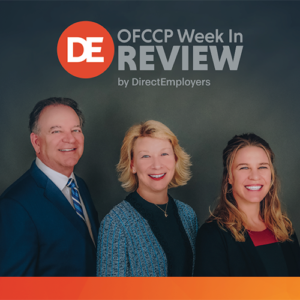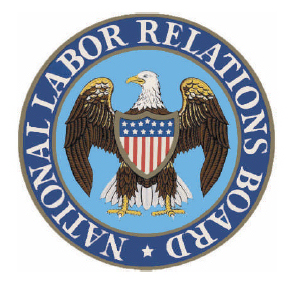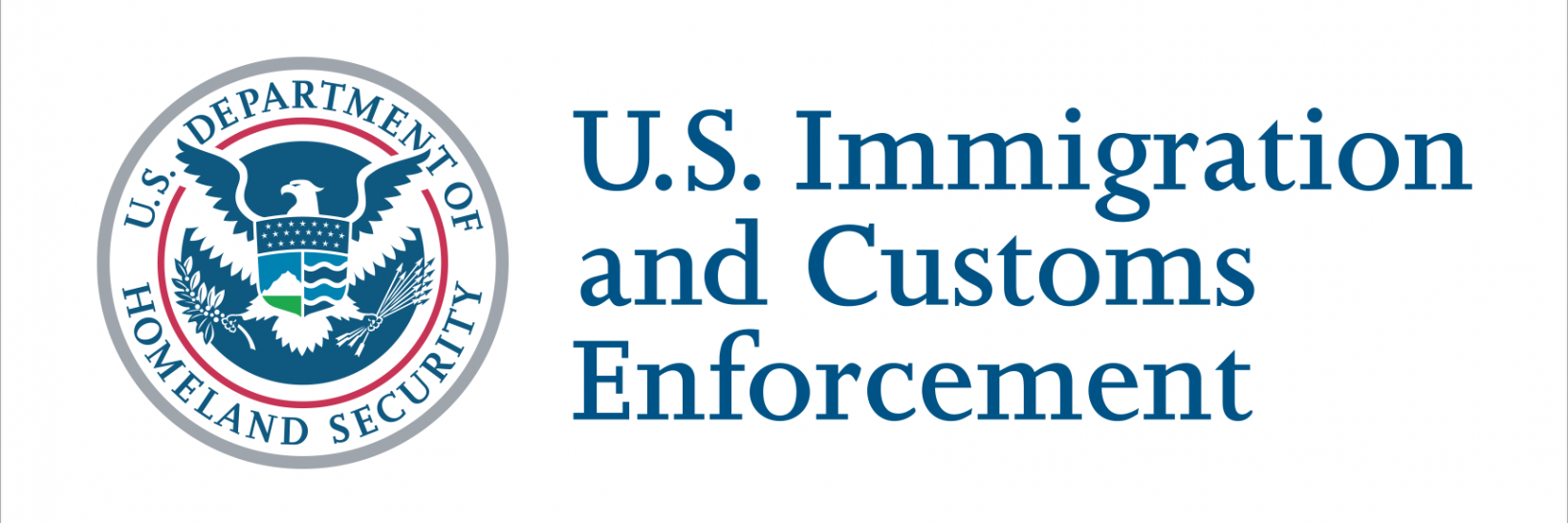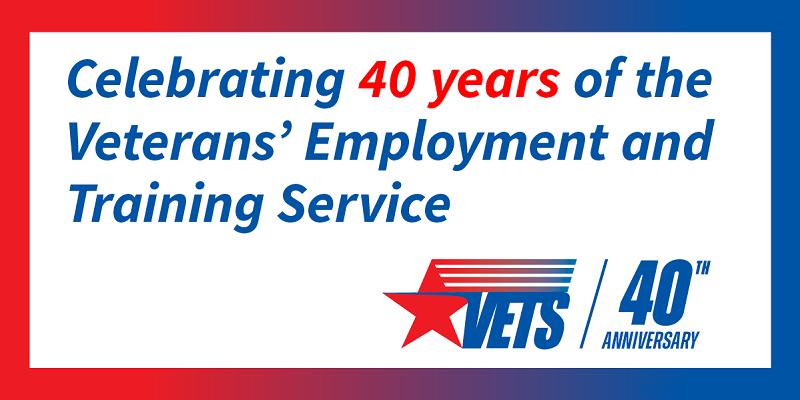 The DE OFCCP Week in Review (WIR) is a simple, fast and direct summary of relevant happenings in the OFCCP regulatory environment, authored by experts John C. Fox, Candee Chambers and Jennifer Polcer. In today’s edition, they discuss:
The DE OFCCP Week in Review (WIR) is a simple, fast and direct summary of relevant happenings in the OFCCP regulatory environment, authored by experts John C. Fox, Candee Chambers and Jennifer Polcer. In today’s edition, they discuss:
- This Week’s Vaccination Injunction Puzzle at a Glance
- When is COVID-19 A Disability Under the ADA? EEOC Expands Technical Assistance Guide
- Today’s Youth = Tomorrow’s Workforce, How do We Cultivate At-Risk Talent?
- Time Extended To Comment On “Consequential Damages” To Employees Per The NLRB
- Form I-9 Employment Eligibility Verification Flexibility Extended Through April 2022
- VETS Turns 40!
- Just In Time To Save Christmas – A Joint Resolution To Increase The Debt Limit By $2.5 Trillion
- This Week’s Surprising Vaccination Mandate Case Decisions
- New Resource: How To Handle Captioning & ASL Requests For Virtual Meetings
- Fair Chance Act – “Ban The Box” – Effective Today as to Federal Contractors!
Monday, December 13, 2021: This Week’s Vaccination Injunction Puzzle at a Glance
After deciding to hear consolidated challenges to the mandate by a three judge panel, rather than by the entire United States Court of Appeals for the 6th Circuit (Cincinnati), the Court on Friday reinstated the OSHA ETS and lifted the previous November 12, 2021 injunction of the United States Court of Appeals for the 5th Circuit (New Orleans) as we previously reported here
- In response to the 6th Circuit’s ruling reinstating the OSHA ETS, OSHA issued an understated and statesmanlike announcement of its decision to use its enforcement discretion to extend the deadline for employer compliance with the ETS. OSHA will not issue citations for noncompliance with any of the ETS requirements before January 10th, and will not issue citations for noncompliance with the employee testing requirements before February 9th so long as an employer is “exercising reasonable, good faith efforts to come into compliance”
- Employer Comments remain due to OSHA; Deadlines Now Extended to January 4, 2022 (recordkeeping requirements) & to January 19, 2022 (all other aspects of the ETS)
Federal Contractor/Subcontractor Vaccine Mandate Enjoined in Two Different Case Decisions
- No new case decision developments this week from what we reported last week
- The Biden Administration has filed appeals of the two adverse decisions previously discussed (to the 5th and 11th Circuits, respectively)
- The Office of Management and Budget has stayed the federal contractor/subcontractor vaccination mandate nationwide, pending decision on the Biden Administration’s appeals
- Federal contractor comments on the vaccine mandate were due to OMB on December 16, 2021
Medicare/Medicaid Service Provider CMS Vaccine Mandate: Biden Administration Files Emergency Application with Supreme Court to Vacate Injunctions Against Mandate Now in Effect in 25 States
- Nationwide injunction gone following 5th Circuit Court of Appeals’ ruling this week curtailing the prior Louisiana District Court nationwide order to just the 14 states named as plaintiffs in the suit
- On Thursday, Texas became the 25th state subject to an order enjoining enforcement of the CMS vaccine mandate
- This is all now subject to the Biden Administration’s emergency application to the U.S. Supreme Court filed on Friday, December 17th seeking a stay of the injunction issued by the Louisiana and Missouri courts pending its appeal. Should the Supreme Court grant the Administration’s application, the Court would lift the injunction against the CMS vaccine mandate
Federal Employee Vaccine Mandate Still in Place, But Cases Pending
- No new developments this week
- We previously reported on two U.S. District Court for the District of Columbia cases which denied preliminary injunction (here and here)
- Both cases found injunctive relief was not warranted as adverse employment action was neither imminent nor certain since requests for exemption remained pending, and that the public interest in health and safety outweighed the potential harm to the plaintiffs
- The Biden Administration had also previously been successful in defeating Motions for Preliminary Injunction against Executive Order 14043 in November 2021 before the S. District Court for the District of Maryland, the U.S. District Court for the District of New Jersey, and the U.S. District Court for the Southern District of Texas.
For additional details on last week’s vaccine mandates case decisions, please see our Friday story below.
Tuesday, December 14, 2021: When is COVID-19 A Disability Under the ADA? EEOC Expands Technical Assistance Guide

Other topics in the new section include disabilities arising from conditions which infection with the COVID-19 virus has caused or has aggravated. New guidance is also included as to when the ADA’s “regarded as” definition of disability applies to a person’s infection with the COVID-19 virus.
What’s New?
The new section, “N. COVID-19 and the Definition of “Disability” Under the ADA/Rehabilitation Act,” contains the following 14 frequently asked questions. See the Guidance itself on the EEOC website for answers to the below questions the EEOC has posed and as to which it has also provided helpful examples.
- How does the ADA define disability, and how does the definition apply to COVID-19?
- When is COVID-19 an actual disability under the ADA?
- Is COVID-19 always an actual disability under the ADA?
- What are some examples of ways in which an individual with COVID-19 might or might not be substantially limited in a major life activity?
- Can a person who has or had COVID-19 be an individual with a “record of” a disability?
- Can a person be “regarded as” an individual with a disability if the person has COVID-19 or the person’s employer mistakenly believes the person has COVID-19?
- What are some examples of an employer regarding a person with COVID-19 as an individual with a disability?
- If an employer regards a person as having a disability, for example, by taking an adverse action because the person has COVID-19 that is not both transitory and minor, does that automatically mean the employer has discriminated for purposes of the ADA?
- Can a condition caused or worsened by COVID-19 be a disability under the ADA?
- Does an individual have to establish coverage under a particular definition of disability to be eligible for a reasonable accommodation?
- When an employee requests a reasonable accommodation related to COVID-19 under the ADA, may the employer request supporting medical documentation before granting the request?
- May an employer voluntarily provide accommodations requested by an applicant or employee due to COVID-19, even if not required to do so under the ADA?
- If an employer subjected an applicant or employee to an adverse action, and the applicant or employee is covered under any one of the three ADA definitions of disability, does that mean the employer violated the ADA?
- Do any ADA protections apply to applicants or employees who do not meet an ADA definition of disability?
Related News & Information
- EEOC News Release
- “Guidance on ‘Long COVID’ as a Disability Under the ADA, Section 504, and Section 1557” from the Department of Justice and the Department of Health & Human Services
- Post-COVID Conditions as defined by the Centers for Disease Control & Prevention
- Last update (WIR 11/17/21) “EEOC’s COVID-19 Technical Assistance Guide Updated to Include Retaliation Information”
Tuesday, December 14, 2021: Today’s Youth = Tomorrow’s Workforce, How do We Cultivate At-Risk Talent?
Today’s youth are tomorrow’s future, and sometimes, they need a second chance and some guidance to set them on the track to success. In the latest episode of the DE Talk podcast, DirectEmployers’ VP of Strategic Partnerships, Shannon Offord, sits down with Denny Armington, President of Youth Opportunity Foundation (YOF), to discuss how YOF works with disadvantaged and post-adjudicated youth to mentor, educate, and train them as they prepare for a stable and rewarding future in the workforce.
Wednesday, December 15, 2021: Time Extended To Comment On “Consequential Damages” To Employees Per The NLRB

Get up to speed on the case which has given rise to the question and the questions as to which the Board seeks input by clicking on this link to our Week In Review from 11/10/21.
New Deadlines
The submission window is currently open.
The deadline to file a brief (under 20 pages) with the Board in Washington D.C. is on or before Monday, January 10, 2022.
The parties (but not amici) may then file responsive briefs (under 30 pages) on or before Tuesday, January 25, 2022. The Board will not accept any other responsive briefs.
Wednesday, December 15, 2021: Form I-9 Employment Eligibility Verification Flexibility Extended Through April 2022
Due to the COVID-19 pandemic, the U.S. Department of Homeland Security (DHS) and U.S. Immigration and Customs Enforcement (ICE) announced another “flexibility extension” for companies seeking to comply with the requirements of Form I-9, Employment Eligibility Verification.
This temporary guidance, originally set to expire on December 31, 2021, will now remain in effect through April 30, 2022. The extension continues to apply the guidance DHS previously issued as to employees hired on or after April 1, 2021 and who work exclusively in a remote setting due to COVID-19-related precautions. Those employees are temporarily exempt from the physical inspection requirements associated with the Employment Eligibility Verification (Form I-9) until they undertake non-remote employment on a regular, consistent, or predictable basis, or the extension of the flexibilities related to such requirements is terminated, whichever is earlier.
See our WIR from 03/23/20 for the original news release with details describing how employers must undertake remote inspections and requirements to retain copies of the identity and employment eligibility documents to complete Section 2 of Form I-9. Please also consult ICE’s guidance for clarification on this provision.
How We Got Here
See all of the E-Verify temporary policies related to COVID-19 on this dedicated webpage.

Wednesday, December 15, 2021: VETS Turns 40!
On December 15, 1981, the USDOL established the Office of the Assistant Secretary of Labor for Veterans’ Employment to alleviate unemployment for disabled and Vietnam-era veterans. Congressional statutes mandated the Assistant Secretary to implement policies and programs to increase opportunities for training, counseling, and employment placement services. While much has changed in the past 40 years, including its name, now the Veterans’ Employment and Training Service (VETS), VETS remains committed to serving all veterans, including the 4.5 million post-9/11 veterans who now represent the largest group of veterans in the labor force.
The current mission of VETS is to prepare America’s veterans, service members, and spouses for meaningful careers, provide them with employment resources and expertise; protect their employment rights, and promote their employment opportunities. Last year, over 2,800 VETS staff, contractors, and grantees served more than 370,000 customers.

Thursday, December 16, 2021: Just In Time To Save Christmas – A Joint Resolution To Increase The Debt Limit By $2.5 Trillion

With the vote count now re-set at 50-50, the Senate on Tuesday then addressed the debt-ceiling limit. Again going late into the night as it had done with prior budget bills, and with the threat several times during the day that any debt level increase would fail to win even 50 Democrat votes, the Bill finally passed by Democrats alone, 50-49. All 49 Republicans who voted opposed the Bill. The action then passed to the House of Representatives with a Yea-Nay vote of 221-209. (The House saw one Republican vote “Yea”: Rep. Adam Kinzinger R-IL.)
The debt limit increase came in the nick of time as U.S. Treasury Secretary Janet Yellen notified Congress last month that after December 15, 2021, “there are scenarios in which the Treasury would be left with insufficient remaining resources to continue to finance the operations of the U.S. Government…” This new “stop-gap” debt ceiling is not expected to settle the issue over the long term, but rather was intended to only punt the debate on what level to set the debt ceiling until an unspecified date in 2023.
In The Know
The debt limit is the total amount of money that the United States government is authorized to borrow to meet its existing legal obligations, including Social Security and Medicare benefits, military salaries, interest on the national debt, tax refunds, and other payments.
See the Bipartisan Policy Centers’ 65-page “Debt Limit Analysis” to learn more about the “extraordinary measures” the Treasury may take to avoid the “X Date” (the day on which the Treasury has exhausted its borrowing authority and no longer has sufficient funds to pay all of its bills in full and on time), as well as what happens if it does (spoiler alert – no real plan…)
Friday, December 17, 2021: This Week’s Surprising Vaccination Mandate Case Decisions
Three-Judge Panel of the Sixth Circuit Court of Appeals Overturns Fifth Circuit Injunction, Reinstates OSHA ETS
Late Friday, the United States Court of Appeals for the Sixth Circuit lifted the nationwide injunction issued by the Fifth Circuit in BST Holdings, L.L.C. v. OSHA, 17 F.4th 604 (5th Cir. 2021), and reinstated the OSHA ETS. The case is In re: MCP No. 165 (Massachusetts Building Trades Council, et al. v. OSHA, et al.), Case No. 21-7000 (6th Cir. December 17, 2021).
The week began with the Sixth Circuit deciding to hear challenges to the OSHA ETS via a three-judge panel. In an 8-8 decision, the Sixth Circuit denied en banc review of challenges to the OSHA ETS. “En banc” review would have required that all 16 judges on the Sixth Circuit hear and rule on the OSHA ETS. However, as the court’s rules required a majority of the judges to agree to en banc review, the Court decided instead to have the challenge heard by a three-judge panel. Opponents of the OSHA ETS concerned that a three-judge panel would be more likely to enforce the OSHA ETS would soon be proven prescient.
Deciding to dissolve the injunction the Fifth Circuit Court of Appeals previously issued, the 6th Circuit Panel in a 2-1 ruling found:
- OSHA was likely to be successful on the merits of its defense in support of the ETS.
- First, the vaccine mandate ETS was within OSHA’s statutory authority. The statute requires OSHA to issue an emergency standard to protect workers from a “grave danger” presented by “exposure to substances or agents determined to be toxic or physically harmful or from new hazards.” Here, the COVID-19 virus by definition is an infectious agent that is a “chemically, physically, or biologically active principle.” Thus, OSHA had long asserted authority to protect workers against infectious diseases such as COVID-19, including those “not unique to the workplace.”
- Second, OSHA’s issuance of the ETS is not an enormous expansion of its regulatory authority, and thus the ETS is an agency action subject to Chevron deference from the court. Indeed, the court ridiculed the Fifth Circuit’s reasoning that OSHA did not have authority to issue the ETS. In citing the Fifth Circuit’s own words that “occupational safety administrators do not make health policy” it included in the BTS opinion, the Sixth Circuit noted that the Fifth Circuit appeared not to have gotten to the third letter in OSHA’s own acronym given that “OSHA” stands for the Occupational Safety and Health Administration.
- Third, OSHA presented sufficient evidence in the record that substantially supported OSHA’s issuance of the ETS. OSHA established that the nature of the pandemic warranted emergency action (relying in part upon the existence of rising variants, such as the Omicron variant), OSHA was not required to establish a finding of exposure in all covered workplaces to establish COVID-19 was a grave danger to workers, and the fact vaccinated employees are significantly less likely to bring or spread COVID-19 established the ETS was essential to reduce the grave danger asserted.
- Fourth, the court did not find the constitutional challenges to the ETS persuasive. Because the ETS related to employers with 100 or more employees, such entities are clearly engaged in interstate commercial activity due to their size that Congress has the power to regulate. Furthermore, such power is one Congress delegated to OSHA given the history of OSHA’s involvement in protecting against infectious diseases in the workplace.
- Parties challenging the OSHA ETS did not establish that any injury to them outweighs the injury to the Government and the general public interest.
- The court determined the injuries asserted by parties challenging the ETS was purely speculative. The court cited the economic analysis OSHA conducted to demonstrate the feasibility of implementing the ETS addressed employer concerns related to compliance cost. Furthermore, employer proclamations related to the potential loss of employees did not take into account the accommodations, mask-and-test option, and exceptions explicitly permitted in the ETS that negate potential staffing loss.
Both the Biden Administration and parties challenging the ETS have already responded to the Sixth Circuit’s ruling. Articles reporting the decision have noted some of the petitioners challenging the ETS have already planned appeals to the U.S. Supreme Court. More importantly, in light of the decision, OSHA has lifted its suspension of implementing the ETS. To accommodate the prior suspension and delay resulting from the Fifth Circuit’s prior ruling, OSHA has exercised its enforcement discretion to extend the deadline for employer compliance with the ETS. As long as employers exercise reasonable, good faith efforts to comply with the ETS, OSHA would not issue draconian financial citations for noncompliance with any of the requirements in the ETS before January 10, 2022.
Furthermore, OSHA indicated it would not issue citations for noncompliance with the ETS’ testing requirements for non-vaccinated employees before February 9, 2022. Thus, employers have a little leeway to come into compliance should the U.S. Supreme Court not issue an emergency ruling again staying the ETS in response to any appeal of the Sixth Circuit ruling.
Fifth Circuit Court of Appeals Lifts Nationwide Injunction of CMS Vaccine Mandate and Limits Injunction Effect to 14 Plaintiff States
As we previously reported, the U.S. District Court for the Western District of Louisiana previously granted a nationwide injunction as to the CMS mandate requiring vaccination of staff of healthcare providers receiving Medicare and Medicaid from the federal government. This week, on appeal the 5th Circuit Court of Appeals limited the injunction to just the 14 states identified as plaintiffs in the case of Louisiana, et al. v. Becerra, et al.
Specifically, the Fifth Circuit agreed the government had not made a strong showing of likelihood of success on the merits due to the CMS vaccine mandate being a novel assertion of authority. The Court relied heavily on its own recent decision in BST Holdings, L.L.C. v. OSHA, 17 F.4th 604 (5th Cir. 2021), in which the Fifth Circuit enjoined the OSHA ETS mandating vaccination of employees of private employers.
However, the Court found no basis for the District Court to extend the injunction nationwide. The Fifth Circuit found that the District Court gave little justification for issuing a nationwide injunction, and noted that nationwide injunctions are outside the norm. As such, the Fifth Circuit limited the holding in Louisiana, et al. v. Becerra, et al. to just the 14 states named as plaintiffs in the action.
Texas Becomes 25th State Subject to Injunction Stopping Enforcement of the CMS Vaccine Mandate
On Wednesday, the U.S. District Court for the Northern District of Texas enjoined enforcement of the CMS vaccine mandate in Texas in Texas, et al. v. Becerra, et al., Case No. 2:21-cv-00229-Z (N.D. Tx. December 15, 2021). The court’s reasoning was substantially similar to the reasoning in the prior Louisiana, et al. v. Becerra, et al. and Missouri, et al. v. Biden, et al. decisions we previously discussed:
- Congress had failed to confer to the CMS power sufficient to mandate who a healthcare provider must hire or fire, which the vaccine mandate imposes. Specifically, the statutory provisions required CMS to mandate “facility standards” alone, and public health and safety regulation beyond facility standards is within the province of the states pursuant to their police powers.
- The CMS mandate violated the APA by failing to comply with the “notice and comment” procedure required of any final federal agency rule. The court rejected the contention that “good cause” existed to skip the notice and comment period given the amount of delay in implementing the mandate.
- The CMS mandate was arbitrary and capricious by: (1) relying on irrelevant data to support conclusory suppositions; (2) failing to account for potential staff and resource shortages arising as a result of the mandate; and (3) failing to allow for exemptions for workers with natural immunity, or who choose to test rather than take the vaccine, or who have no patient contact.
Given the foregoing, the court found that plaintiffs would suffer substantial, irreparable harm should the mandate be left in place to not only their sovereign and proprietary interests, but also in the resulting staffing shortages that would occur.
Biden Administration Seeks Emergency Stay of Injunctions Against the CMS Vaccine Mandate from the U.S. Supreme Court
Faced with injunctions that prohibited implementation of the CMS vaccine mandate as to healthcare workers in 25 states, the Biden Administration on Friday filed an emergency application to the United States Supreme Court for a stay of the injunctions federal courts have previously issued pending the Administration’s appeal of the injunction orders to the respective appellate circuit courts. Under the rules of the U.S. Supreme Court, a single justice may stay a district court order pending appeal to a U.S. Circuit Court of Appeal. Supreme Court Justice Alito is assigned to be the Justice responsible for Fifth Circuit Court of Appeals rulings. Justice Alito is one of the Supreme Court’s most conservative Justices and a firm believer in a limited form of federal government. Accordingly, CMS’ exercise of executive power to issue its mandate does not bode well on the face of it for CMS’ appeal to him.
In deciding whether to issue a stay, the U.S. Supreme Court considers: (1) whether four justices are likely to vote to grant certiorari if the Court of Appeals ultimately rules against the applicant; (2) whether five justices would then likely conclude the case was erroneously decided below; and (3) whether, on balancing the equities, the injury asserted by the Administration outweighs the harm to the other parties or the public.
The Administration’s emergency application is unsurprising, and a natural culmination of the Administration’s efforts to implement the CMS vaccine mandate in the face of the various injunctive orders ruling against implementation. Specifically, the Administration is attempting to force implementation of the CMS mandate while litigation proceeds against the mandate (whereas the injunctions issued against the CMS mandate maintains the current status quo by not requiring vaccination until final disposition of the cases against the mandate).
Readers may likely expect Justice Alito’s decision this week.
Friday, December 17, 2021: New Resource: How To Handle Captioning & ASL Requests For Virtual Meetings

Check out “How to Handle Captioning & ASL Requests for Virtual Meetings.”
Monday, December 20, 2021: Fair Chance Act – “Ban The Box” – Effective Today as to Federal Contractors!
Federal Contractors – “Ban The Box” is here! This term refers to an international campaign by civil rights groups and advocates for ex-offenders to persuade employers to remove from their hiring applications the “checkbox” that asks if applicants have a criminal record. We initially reported about The Fair Chance Act back in February of 2019. The Bill was incorporated as section 1123 of the “National Defense Authorization Act for Fiscal Year 2020” and passed on December 20, 2019. (See pages 413 – 417 of the 1119-page Bill)
The “Prohibition on criminal history inquiries by contractors prior to conditional offer” (41 U.S. Code § 4714) section was slated to become effective two years from the Bill becoming law. December 20, 2019 + two years = December 20, 2021. (See section 1122(b)(2) of Pub. L. 116–92, div. A title XI, subtitle B, set out as a note under section 9202 of Title 5, Government Organization and Employees.)
Note: The law required the Administrator of U.S. General Services Administration (GSA) to issue regulations by April 20, 2021, to identify other positions exempt from the law. Specifically, positions “that involve interaction with minors, access to sensitive information, or managing financial transactions.” (see page 414) However, GSA has not issued these regulations to date.
Federal Government Contractor Action Items
- Determine if your current process includes questions about criminal convictions in the application process before a conditional job offer.
- Review your city and state regulations for ban-the-box requirements.
- Read the regulations – there are exceptions, definitions, and violation actions.
- Train your team and update your hiring processes and manuals as applicable.
That’s a Wrap From Team WIR!
Can you believe we covered 427 stories so far this year?! It has been quite a year, and as such, this is the last WIR publication in 2021 as the team takes some time to spend with our loved ones. We hope all of you can do the same! Not to worry though, we’ll be back on Tuesday, January 4, 2022, with a full recap of the last two weeks of the year.
Happy Holidays To All!
SUBSCRIBE.
Compliance Alerts
Compliance Tips
Week In Review (WIR)
Subscribe to receive alerts, news and updates on all things related to OFCCP compliance as it applies to federal contractors.

